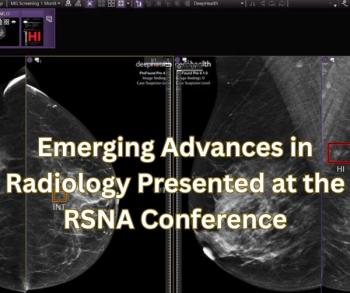
3D CT colonography overcomes diverticulosis
Colonic diverticular disease does not necessarily spoil CT colonography, according to a study by University of Wisconsin researchers. There is a caveat, though: Radiologists must apply a 3D imaging approach.
Colonic diverticular disease does not necessarily spoil CT colonography, according to a study by University of Wisconsin researchers. There is a caveat, though: Radiologists must apply a 3D imaging approach.
Imagers have long dealt with the hindering effects of colonic diverticular disease on CTC. Colonic segments with significant diverticulosis make the primary 2D imaging approach particularly challenging, said study coauthor Dr. Perry J. Pickhardt, an associate professor of radiology at the University of Wisconsin Medical School in Madison.
"With primary 3D evaluation, the effect of diverticular disease on interpretation is less severe," he said.
Pickhardt and colleagues assessed the power of primary 3D CTC to circumvent the negative impact diverticular disease had on polyp detection. They enrolled 280 asymptomatic adults at average risk who underwent CTC followed by same-day standard colonoscopy.
The researchers found that significant diverticular disease had a very high prevalence among asymptomatic patients. It did not, however, degrade the diagnostic performance of CTC for polyps 6 mm and greater. They presented their preliminary findings at the 2005 RSNA meeting.
The investigators performed a primary 3D endoluminal evaluation with 2D correlation for initial polyp detection at CTC. They retrospectively reviewed all colonic segments for presence of diverticular disease without knowledge of polyp findings and used composite morphologic criteria at CT - including fold thickening, luminal narrowing, and diverticula - to grade each segment to rule out or confirm minimal, moderate, or extensive diverticular disease.
The researchers found moderate or extensive diverticular disease present in 271 of 2240 colonic segments (12.1%). The sigmoid colon accounted for 46.5% of these segments. By-segment CTC performance for polyps 6 mm and greater in the presence and absence, respectively, of moderate-extensive colonic diverticular disease showed:
- sensitivities of 90.3% (28/31) and 79.4% (123/155)
- specificities of 97.1% (233/240) and 97.7% (1772/1814)
- positive predictive values of 80.0% (28/35) and 74.5% (123/165)
- negative predictive values of 98.7% (233/236) and 98.2% (1172/1804)
CTC showed a similar diagnostic performance despite the presence of diverticular disease. Interestingly, though, the prevalence of polyps 6 mm and greater was higher in segments with significant diverticular disease. The finding was statistically significant (p = 0.046).
Although colonic diverticular disease remains challenging in terms of luminal distention, it is not a significant drawback for CTC screening with primary 3D interpretation, Pickhardt said.
"This is good news for both patients and interpreting radiologists," he said.
For more information from the Diagnostic Imaging archives:
'Filet view' software streamlines CT colonography
CT colonography gets ready for its close-up
3D postprocessing tools shed light on hidden polyps
MSCT provides first-line colon assessment
Careful CT colonography technique avoids pitfalls
Newsletter
Stay at the forefront of radiology with the Diagnostic Imaging newsletter, delivering the latest news, clinical insights, and imaging advancements for today’s radiologists.




























